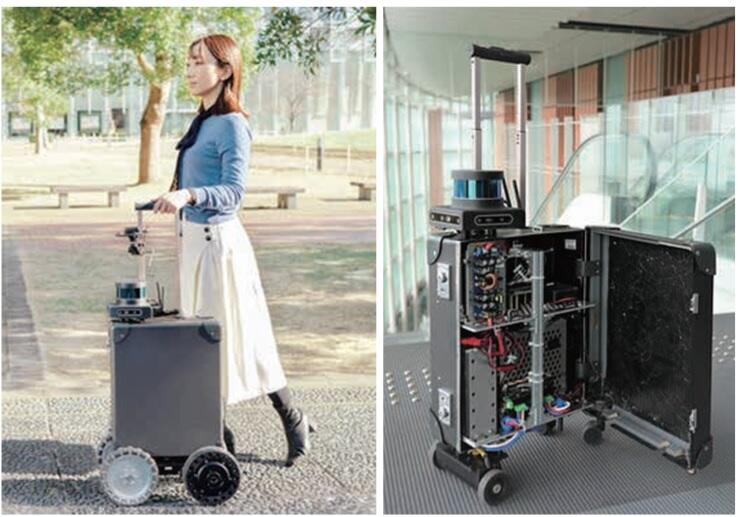At first glance, the 'AI suitcase' looks like an ordinary suitcase, but it is actually a robot equipped with various sensors, AI and motors. When pedestrians place their hand on the handle, the AI suitcase guides them to a predetermined destination while avoiding obstacles and people. Navigational voice provides the surrounding information, such as buildings, and the guidance speed can be adjusted to the walking speed of the pedestrian, allowing visually impaired users to walk easily and leisurely.
The National Museum of Emerging Science and Innovation (Miraikan), which is developing the AI Suitcase, conducted its first outdoor demonstration test earlier this year from January 28 to February 6, 2023. Approximately 40 people, including visually impaired individuals, experienced walking guidance on a public road from Miraikan to the nearest station. Positive comments were received, including the following: "I was impressed that I could move without bumping into people" and "I feel a sense of accomplishment to be able to walk by myself."
For the outdoor demonstration test, a new outdoor‐driving module with larger wheels was developed and installed to enable the AI Suitcase to overcome the gap between the road and sidewalk. In addition, a high‐precision satellite positioning system was also introduced to enable the AI Suitcase to estimate its position outdoors with an error margin of approximately 10 cm.
Chief Executive Director Chieko Asakawa of Miraikan, who conceived the idea of the AI suitcase, said with enthusiasm for the future, "Our goal is to make it the third means of mobility assistance, following canes and guide dogs. We would like to make walking around town more enjoyable for visually impaired people." New proposals such as AI shopping carts for the elderly and AI strollers have also been received. A close eye will be kept on the development of autonomous robots meeting diverse needs.





